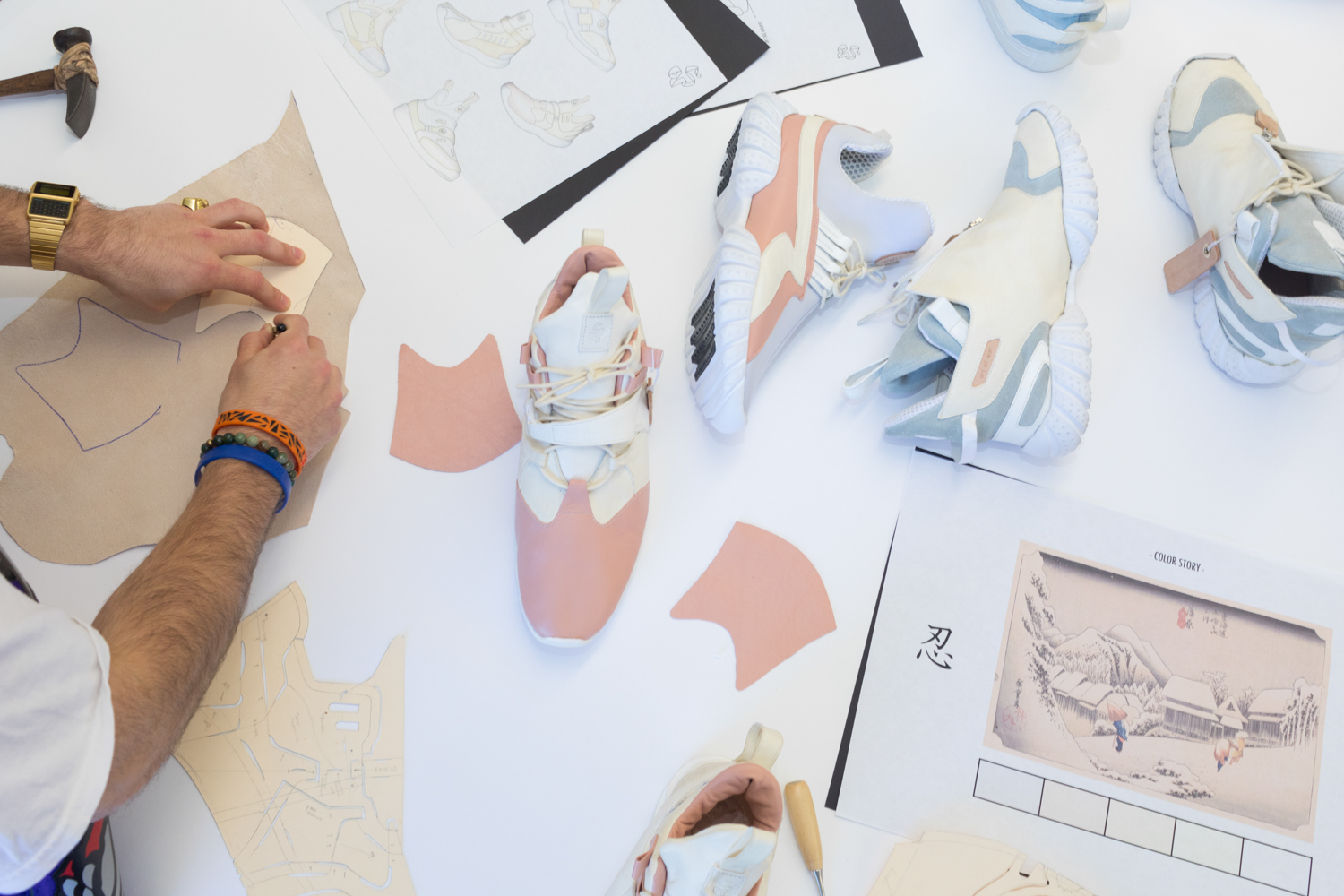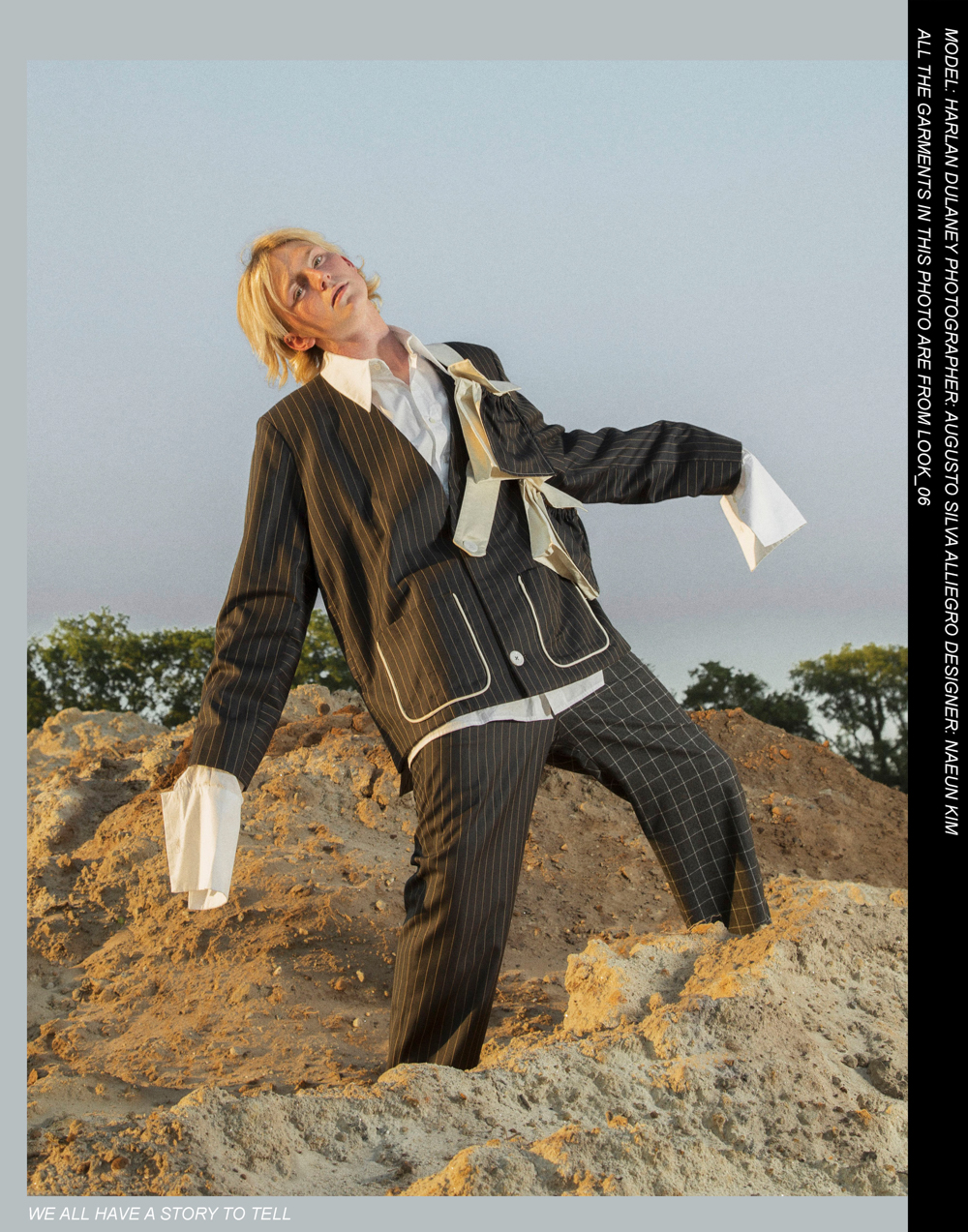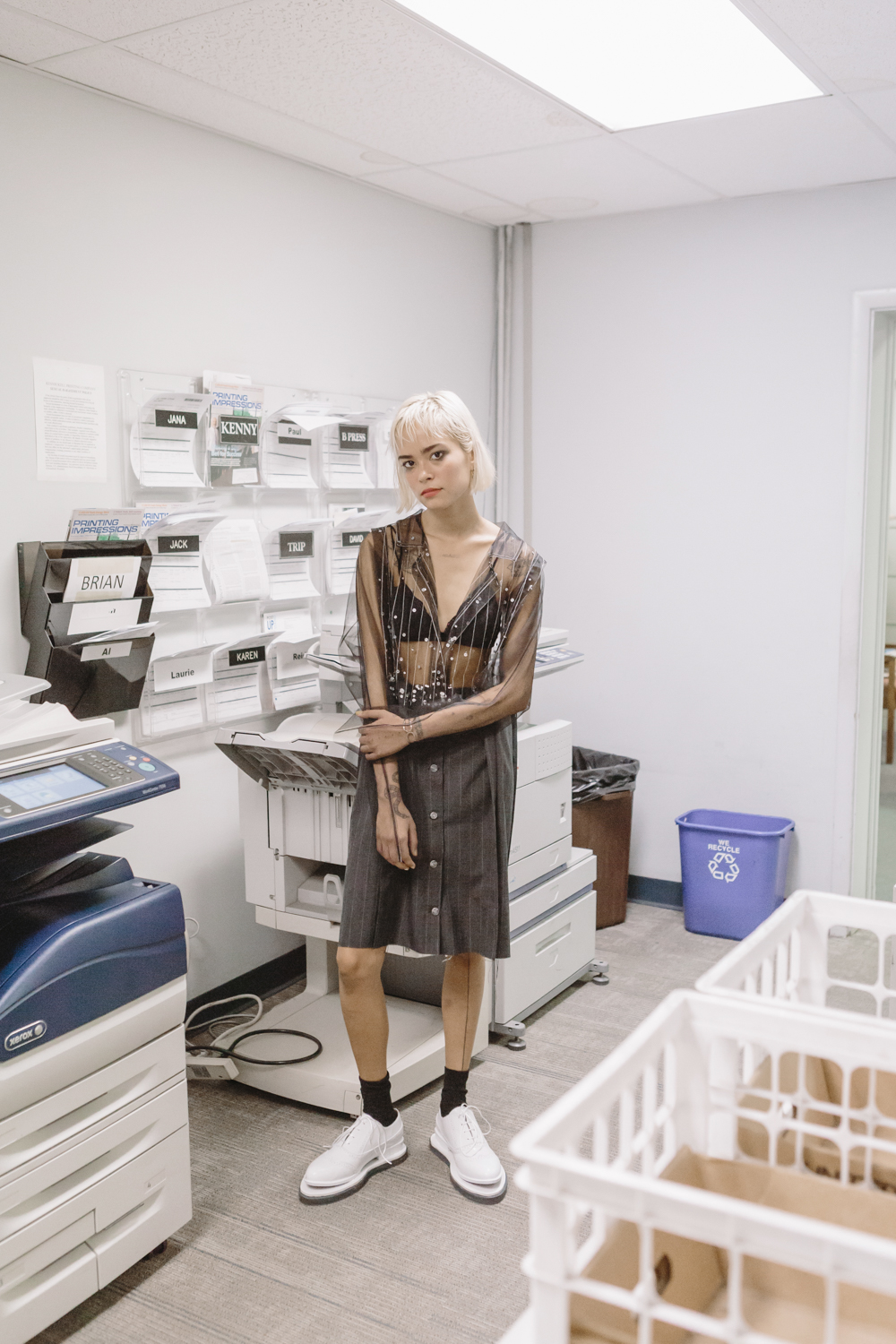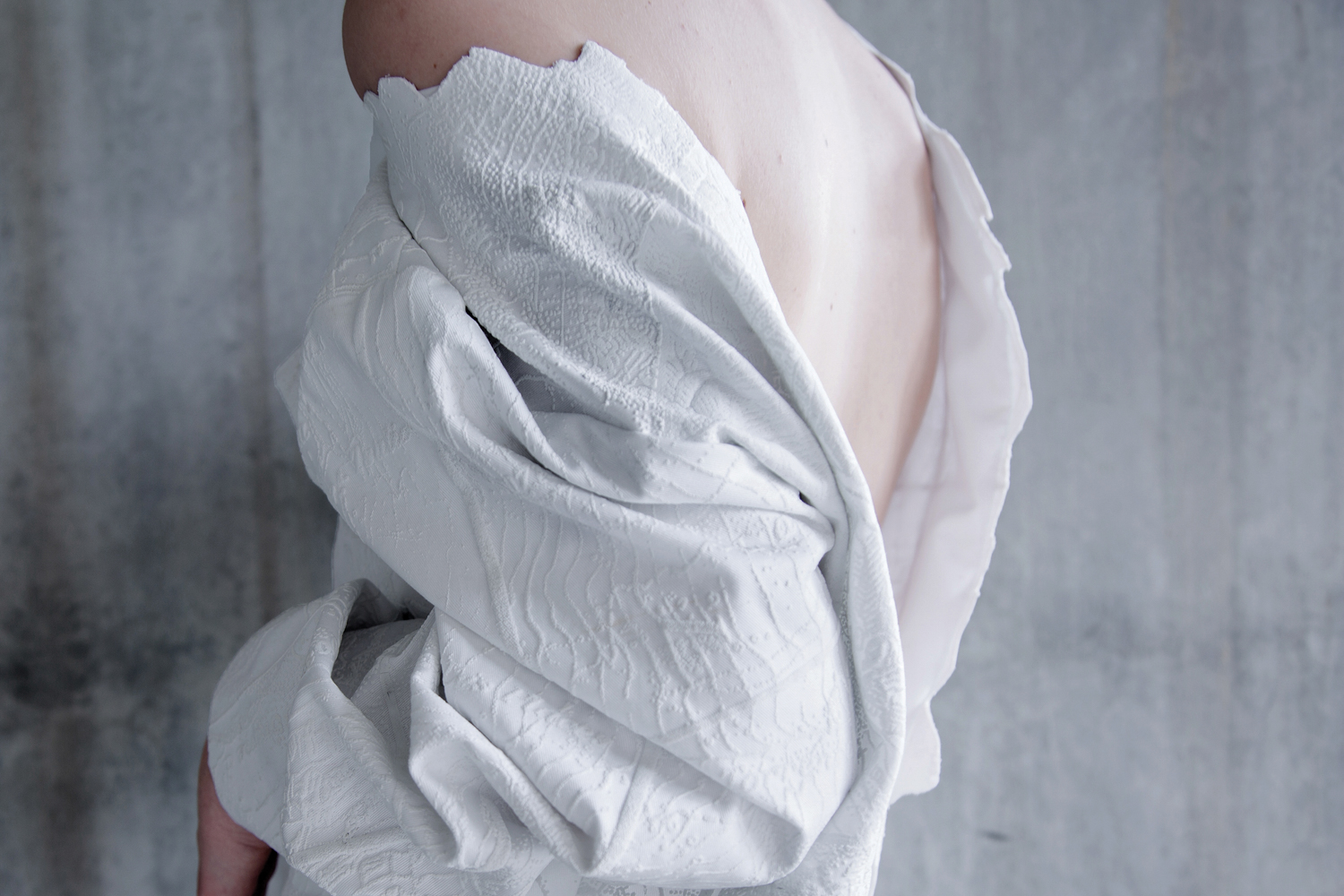Every year, the Council of Fashion Designers of America (CFDA) spotlight a number of graduates from the leading fashion schools in the world. These future faces of fashion are asked to express their unique take on the industry and the impact they will make on it.
This year, four SCAD graduates were chosen by the CFDA to share their voice. We had the privilege of sitting down with each of the creatives to discuss their aesthetics, goals, and hopes for the future of fashion.
Our first design graduate is shoemaker and footwear designer Samuel Tick. He graduated from SCAD this past spring with a BFA in accessory design and is now self-employed, creating bespoke footwear.
Describe your aesthetic as a designer.
Tick: My design aesthetic is more based on the craft. Shoemaking is a lost art, and I take pride in making each pair by hand. So much goes into making a shoe from scratch. It is about more than just the shoes, it’s a character building exercise. However, most of my work is through an Asian lens with hints of street culture.
What most influences your designs?
As a designer, I am heavily influenced by the music and sports of the early 2000s. Think Vince Carter in the dunk contest. Japan is also a huge source of inspiration for me as well; they always seem to be ahead of the rest of the world when it comes to quality and innovation.
[edgtf_image_gallery type=”slider” enable_image_shadow=”no” image_behavior=”lightbox” space_between_items=”tiny” slider_loop=”yes” slider_autoplay=”yes” slider_padding=”yes” slider_navigation=”yes” slider_pagination=”no” images=”9770,9762,9766,9765″ image_size=”600×450″ slider_speed=”5000″]
It says on your website that music, hip-hop specifically, serves as an inspiration to many of your designs. Would you say that the fashion and music industries are interdisciplinary?
Yes, they are interdisciplinary. Hip-hop and fashion are just platforms for people to spread their ideology. The majority of people in the music and fashion industry are money hungry and not in it for the right reason. With that said, both take an extreme attention to detail to truly master the craft.
What is the most valuable piece of advice you can give to people wanting to start a creative career?
My advice to anyone getting started in this field is to not be afraid of failure. To succeed you must fail. Also, I would warn students to avoid following trends.

In this article, the CFDA focused on an overarching theme of inclusivity and unity when considering the “future of fashion?” What are your thoughts on this? With the political and social climate we are living in, how does fashion affect change?
The future of fashion is not so bright. While a lot of companies are moving more towards eco-friendly design, many still ignore the negative effects of the leather industry. My hope is that luxury companies will move away from using animal products. The negative impact of animal agriculture is undeniable. The most “luxurious” (i.e. soft and thin) material is supplied by new-born veal calves, and sometimes even unborn calves, taken prematurely. In China, India, and several other developing countries, wild animals are often illegally poached for their skins: this includes alligators, elephants, lizards, ostriches, snakes, zebras, and so much more. Furthermore, in China – the world’s leading leather exporter – an estimated two million cats and dogs are killed for their skins, which can’t be detected by consumers due to either a complete lack of labeling or deliberate mislabeling.
[edgtf_separator class_name=”” type=”full-width” position=”center” color=”black” border_style=”solid” width=”” thickness=”1″ top_margin=”10″ bottom_margin=”10″]
The next designer we talked to is also highly influenced by the world around her, both real and make-believe. Naeun Kim is a fashion design graduate who draws inspiration from imaginative stories. While working on her BFA at SCAD, Kim focused on menswear and presented her senior thesis collection based on the biggest secret from her childhood.
 Describe your style as a designer in 3 words.
Describe your style as a designer in 3 words.
Oversized, minimal, structural.
What most influences your designs?
I am usually inspired by imaginary stories. Instead of looking at something only in a superficial way, I imagine a story inside of it and build more specific and concrete ideas through the story. I love when inspirational factors and imaginary stories are combined and become one very unique concept in the end.
What are your career plans now that you have graduated?
Currently, I am working at the sample making room in Proenza Schouler in New York. Further down the line, I want to launch my own fashion label. In order to be a good designer and launch my own label, I believe it is good to know how every part of a company runs. Therefore, I want to experience as much as possible in various positions: designing, personal relations, and production. Also, if I have a chance to study more, I would love to go to graduate school.
What is the most valuable piece of advice you can give to people wanting to start a creative career?
I believe everyone has their one color. Different people have different colors. Different messages people want to say through their designs. There are no “better designs,” just different designs. Please don’t compare yourself to others, and don’t be disappointed in yourself if, and when, you fail. Find your own creative way to communicate your message the best.
The CFDA focused on an overarching theme of inclusivity and unity when considering the “future of fashion?” What are your thoughts on this idea With the political and social climate we are living in?
It might be affected the same as in other industries, however, I believe fashion is affected more sensitively by political and social climate. I believe fashion is a mirror reflecting the times.
What voice do you think fashion has in political and social movements?
I believe fashion is one of the various arts, which helps designer speak their own message to the world through ‘fashion design’. And, I believe fashion has always had a strong and unique voice. Compared to the other art forms, the political and social message fashion sends to the public is done in a more comfortable and enjoyable way. In my personal opinion, the way fashion expresses a message is not aggressive, but it has a strength inside of it.
[edgtf_image_gallery type=”grid” enable_image_shadow=”no” image_behavior=”lightbox” number_of_columns=”three” space_between_items=”no” images=”9791,9792,9793″ image_size=”full”]
[edgtf_separator class_name=”” type=”full-width” position=”center” color=”black” border_style=”solid” width=”” thickness=”1″ top_margin=”10″ bottom_margin=”10″]
As a designer of multiple backgrounds, our next graduate received an MFA in fashion design in addition to a BFA in industrial design. Such interdisciplinary work has inspired Zimo Yan to consider many things when creating garments: senses, emotions, and movement.
How would you describe yourself as a designer?
As a designer, I like the things that can attract and inspire people. Garments with unusual silhouettes and special textiles always attract me. I prefer to understand the meaning of a garment rather than just looking the just garment itself. I am focusing on merging new ideas with design, like to create new textiles [and] fabric manipulations [and] to break traditional boundaries of construction. I want my garments to send and respond differently when worn by different people. It’s like everyone has a unique experience with wearing it.
What most influences your designs?
My multiple backgrounds, industrial design, and fashion, always drove me to think outside of the boundaries and makes me pay more attention to the [garment itself] and not the limits to fashion. Also, I am a museum person; [a lot] of my collections were inspired by art installations. It is also one of the reasons why I am starting [to] focus on designing interactive garments.
[edgtf_image_gallery type=”grid” enable_image_shadow=”no” image_behavior=”lightbox” number_of_columns=”three” space_between_items=”tiny” images=”9809,9810,9811″ image_size=”full”]
What are your current career plans now that you have graduated from SCAD?
To be a designer [and] work [for] companies that fit my aesthetic.
What is the most valuable piece of advice you can give to students or anyone wanting to start a creative career?
Don’t limit your thoughts, and believe yourself
In this article, the CFDA focused on an overarching theme of inclusivity and unity when considering the “future of fashion?” What are your thoughts on this? With the political and social climate we are living in, how does fashion affect change?
I think the “future of fashion” will be very different but also unified; the difference will be in technologies, [which] are developing very fast. Fashion [will] have more [opportunities] to be crazy and achieve the designer’s [vision]. [Current] globalization is a phenomenon that affects all areas of design; people’s aesthetics are becoming more and more similar, and it directly affects the industry. People are following the fashion trends; at the same time, they are also expected to be more accepted with different designs.
I read that you have a background in industrial and product design. How does this affect your fashion designs?
I pay attention to things in different areas, especially technologies and art. The background brings me lots of strange ideas but at the same time drives rational thinking. Like my Thesis collection, Sense of Control, [my designs] are the combination of garments and technologies; it has the new principles of fashion but also consists of the wearable possibility.
[edgtf_separator class_name=”” type=”full-width” position=”center” color=”black” border_style=”solid” width=”” thickness=”1″ top_margin=”10″ bottom_margin=”10″]
Our last designer also has a background in multiple fields. Nikki Kai Lee first received her BFA from SCAD in fibers then went on to graduate with a double major in fashion design as well. Still, it wasn’t enough, and she is now working towards a minor in industrial design. She has shown her work in London, Berlin, and has held several internships during her time at SCAD, which has influenced her use of materiality in fashion design.
 Describe your aesthetic as a designer.
Describe your aesthetic as a designer.
I am most drawn to complex surface articulations with minimal silhouettes and forms. I was born to two architects but my family in Switzerland has long roots in textile and craft production, so I think that my design process marries these two somewhat opposing worlds.
What most influences your designs?
Research and process are the most critical influences on my designs. By rethinking conventional textile manufacturing methods and processes and combining them with new and intelligent technologies, processes and materials, I am able to approach my designs with a fresh viewpoint.
What are your career plans now that you have graduated from SCAD?
I am actually not quite done with my time at SCAD-I realized during my time here that I needed to be more well-versed in certain technologies, programs, and processes to take my textile work further so I am now pursuing a minor degree in Industrial Design. However, once I (officially) graduate I plan to work in a collaborative research//design studio or innovative company such as Nike before pursuing my Master’s in Material Research and Development.
What is the most valuable piece of advice you can give to people wanting to start a creative career?
Read, research and collaborate as much as you can-I have found that I have produced the most exciting work when working with others of different disciplines. Injecting new processes and techniques into traditional practices has allowed my work to expand into another level of complexity.
In this article, the CFDA focused on an overarching theme of inclusivity and unity when considering the “future of fashion?” What are your thoughts on this? With the political and social climate we are living in, how does fashion affect change?
Fashion has an enormous global impact, both on an environmental and humanitarian level. For instance, fast fashion is the second dirtiest industry in the world, and textile production plays a heavy hand in that. It is my strong belief that in order to solve many of the issues we are facing as a global community now, we need to tackle the production process to make it more efficient and less damaging-by addressing the production issue alone, pollution could be lessened, workers could receive better treatment, and byproduct waste would diminish drastically.
With a degree in both fibers and fashion design, it is evident that experimentation plays a large role in your work. Why is experimentation so important to you and to the design process in general?
It is through experimentation that advancements and innovations are made. The experimental stage has always been my favorite part of the design process because it allows me to have a sense of play in my work, and allows me to develop shapes and textures and surfaces that I could not have envisioned before.
Written by Kat Sours
Images courtesy of designers

